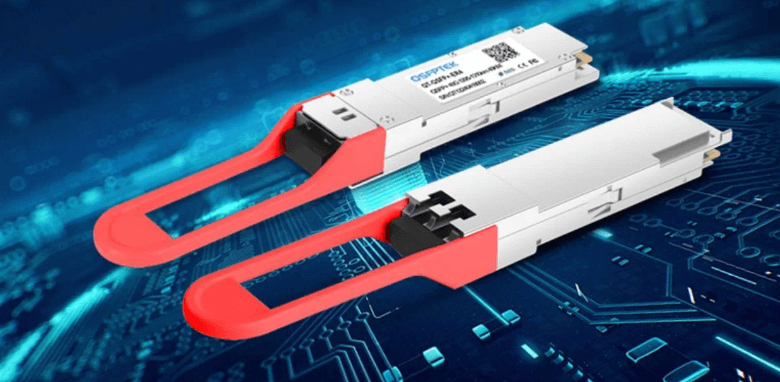How 40G QSFP+ ER4 Enables Reliable 40km Connectivity for Modern Networks

As network infrastructures evolve to meet the exponential demand for data, speed, and reliability, the ability to transmit large amounts of information across long distances has become a defining challenge. Modern enterprises, data centers, and telecom providers need interconnection solutions that deliver not only bandwidth but also stability and cost efficiency. Among the various 40G optical transceivers available, the 40G QSFP+ ER4 stands out for its ability to provide consistent, high-quality communication over distances of up to 40 kilometers. With its 1310nm wavelength, advanced multiplexing design, and strong performance across single-mode fiber (SMF), the QSFP+ ER4 module represents a key building block in creating scalable and future-proof network architectures.

The Role of 40G in Network Evolution
Before the era of 100G and 400G networking, 40G Ethernet was the first major leap beyond the 10G standard. It provided a critical performance improvement while maintaining backward compatibility with existing infrastructures. Even today, 40G technology continues to play a significant role, particularly in enterprises and metro networks that do not yet require the complexity or cost of 100G deployments. The 40G QSFP+ form factor, with its compact design and low power consumption, made it possible to increase port density while keeping network equipment efficient and manageable. Within this ecosystem, different optical module standards emerged to address various transmission needs, and the ER4 variant became the go-to choice for extended reach applications.
Understanding 40G QSFP+ ER4 Technology
At its core, the 40GBASE-ER4 QSFP+ transceiver is designed to transmit 40 Gigabit Ethernet signals over single-mode fiber up to a distance of 40 kilometers. It operates at a wavelength of 1310nm and uses four independent transmit and receive channels, each carrying 10Gbps of data. These four lanes are then multiplexed into a single 40G data stream, enabling efficient and synchronized transmission across long distances. The ER4 module typically uses an LC duplex connector and integrates Digital Diagnostic Monitoring (DDM) functionality, allowing real-time monitoring of parameters such as optical power, temperature, and voltage. This capability ensures proactive maintenance and minimizes the risk of link degradation or failure.
What differentiates the ER4 module from other QSFP+ variants lies in its optical amplification and dispersion management. The “ER” stands for “Extended Reach,” indicating its suitability for long-haul connections that go well beyond the capabilities of SR4 (Short Reach, up to 100m) and LR4 (Long Reach, up to 10km) transceivers. The ER4 module’s internal components are engineered to maintain signal integrity even when attenuation and chromatic dispersion accumulate over long fiber runs. This makes it ideal for connecting data centers, metropolitan aggregation points, and enterprise campuses separated by tens of kilometers.
Reliability and Performance Across 40km Links
Reliability is the foundation of long-distance network connectivity. The 40G QSFP+ ER4 ensures dependable performance through its robust optical design and strict compliance with IEEE 802.3ba standards. By operating on the 1310nm wavelength, it benefits from lower fiber attenuation and reduced dispersion compared to shorter-wavelength solutions. These properties contribute to stable data transmission with minimal bit error rates, even across challenging link conditions. Additionally, its compatibility with standard single-mode fiber simplifies deployment and integration into existing optical networks without the need for specialized infrastructure.
Temperature stability is another important consideration in modern network environments. Industrial and carrier-grade deployments often experience fluctuations in ambient temperature, which can impact laser performance and signal stability. The QSFP+ ER4 module is built to maintain consistent output power and modulation characteristics across a wide temperature range, ensuring reliability under real-world conditions. Combined with its DDM support, network administrators can easily monitor and manage module health, preempting potential issues before they impact network performance.
Applications in Modern Network Architectures
The versatility of the 40G QSFP+ ER4 module makes it suitable for a broad spectrum of network scenarios. In data center interconnect (DCI) applications, it bridges facilities that are geographically distributed within a metropolitan area. For example, large enterprises may need to synchronize data between two campuses located several kilometers apart. The ER4 transceiver enables this connectivity without resorting to complex DWDM systems, offering a cost-effective solution that still delivers carrier-grade performance. Similarly, in telecom and ISP environments, ER4 modules serve as reliable links in aggregation or distribution layers, ensuring smooth traffic flow between core and edge networks.
Another growing use case lies in high-performance enterprise networks that require long-distance backbone links. As companies adopt hybrid cloud and remote data replication strategies, bandwidth and distance requirements have increased significantly. The 40G QSFP+ ER4’s ability to handle large-scale data transfers over 40km links makes it an essential tool for such scenarios. Furthermore, because it uses the QSFP+ interface, it is hot-swappable and fully compatible with most leading network switch and router brands, offering flexibility and ease of integration.
Cost Efficiency and Scalability
While the 40G QSFP+ ER4 delivers strong long-distance performance, it also provides an attractive balance between capability and cost. Compared to 100G solutions, 40G ER4 modules are more affordable, consume less power, and remain a practical choice for organizations that do not yet require 100G bandwidth. Moreover, many 40G infrastructures can be upgraded to 100G in the future without complete replacement, as they share similar cabling and optical design principles. This forward compatibility allows businesses to scale gradually while maximizing their existing investment. For networks seeking dependable long-distance connectivity without overspending, ER4 transceivers represent a well-calibrated middle ground.
See also: How to Introduce New Tropical Fish Without Stressing Your Tank
Conclusion
As networks continue to expand and the demand for high-speed, long-distance communication grows, the 40G QSFP+ ER4 transceiver remains an indispensable component of modern infrastructure. Its ability to deliver reliable 40km connectivity, maintain signal integrity under challenging conditions, and seamlessly integrate into existing systems makes it a trusted choice for enterprises, data centers, and service providers alike. While newer technologies such as 100G and 400G are shaping the future of networking, the QSFP+ ER4 continues to hold strategic importance as a cost-effective and stable solution for extended reach optical transmission. In bridging the distance between performance and practicality, it ensures that 40G networks remain relevant, resilient, and ready for the demands of tomorrow.



